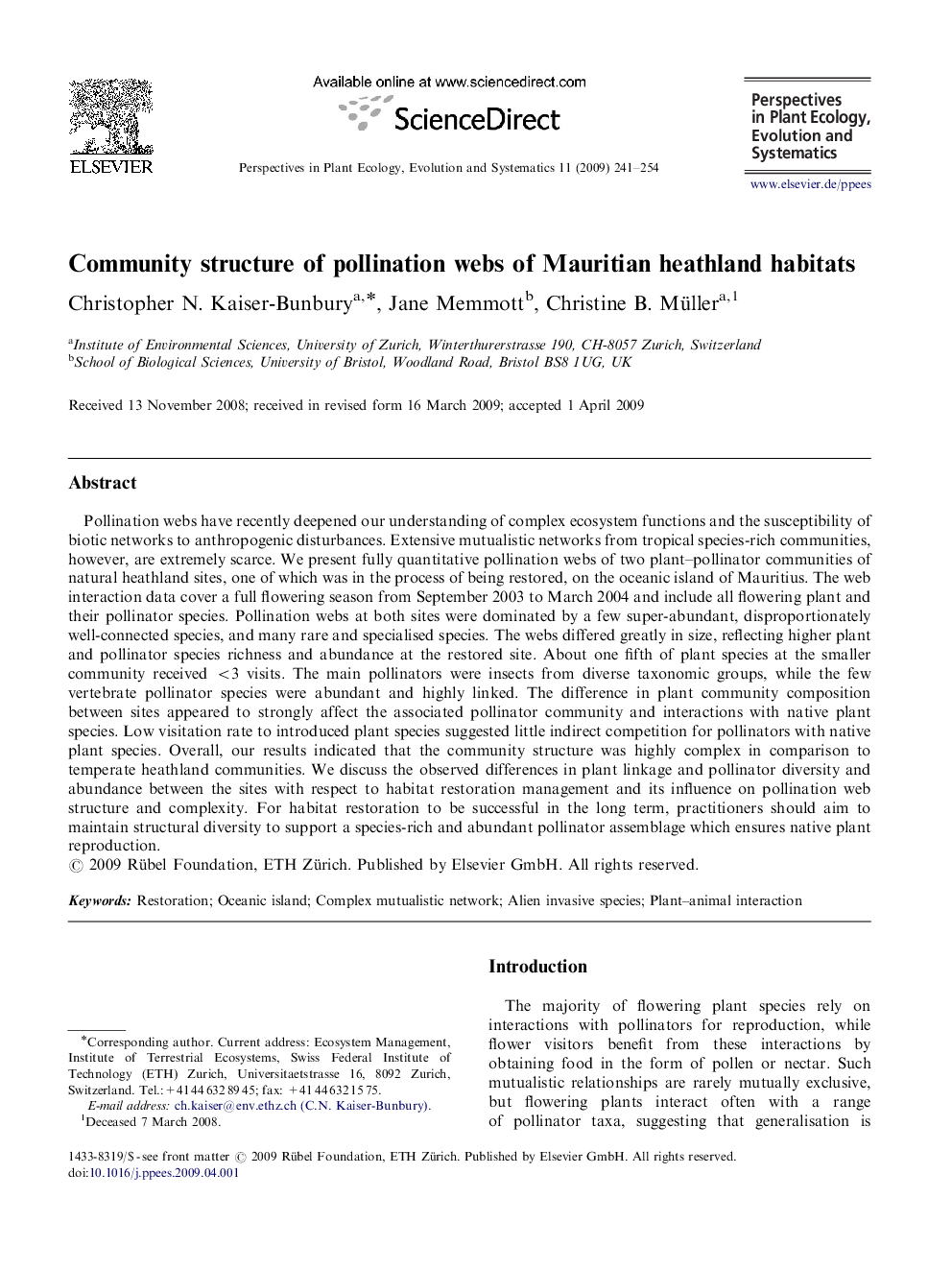| Article ID | Journal | Published Year | Pages | File Type |
|---|---|---|---|---|
| 4401269 | Perspectives in Plant Ecology, Evolution and Systematics | 2009 | 14 Pages |
Pollination webs have recently deepened our understanding of complex ecosystem functions and the susceptibility of biotic networks to anthropogenic disturbances. Extensive mutualistic networks from tropical species-rich communities, however, are extremely scarce. We present fully quantitative pollination webs of two plant–pollinator communities of natural heathland sites, one of which was in the process of being restored, on the oceanic island of Mauritius. The web interaction data cover a full flowering season from September 2003 to March 2004 and include all flowering plant and their pollinator species. Pollination webs at both sites were dominated by a few super-abundant, disproportionately well-connected species, and many rare and specialised species. The webs differed greatly in size, reflecting higher plant and pollinator species richness and abundance at the restored site. About one fifth of plant species at the smaller community received <3 visits. The main pollinators were insects from diverse taxonomic groups, while the few vertebrate pollinator species were abundant and highly linked. The difference in plant community composition between sites appeared to strongly affect the associated pollinator community and interactions with native plant species. Low visitation rate to introduced plant species suggested little indirect competition for pollinators with native plant species. Overall, our results indicated that the community structure was highly complex in comparison to temperate heathland communities. We discuss the observed differences in plant linkage and pollinator diversity and abundance between the sites with respect to habitat restoration management and its influence on pollination web structure and complexity. For habitat restoration to be successful in the long term, practitioners should aim to maintain structural diversity to support a species-rich and abundant pollinator assemblage which ensures native plant reproduction.
